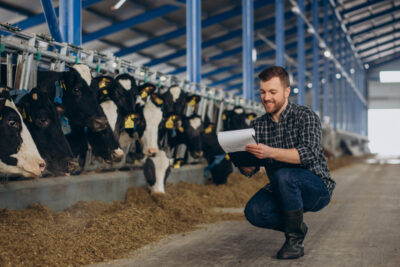Agricultural businesses are critical to the American economy. They provide so much food that the entire country depends on both livestock and crops. However, farming is often considered one of the most difficult jobs. The hours are long, the pay is usually meager, and breaks are incredibly hard to come by.
The cost of owning and running a farm is substantial. There are tons of resources that are required to keep animals fed, farm equipment running, and fields fertilized. Often, farmers have to find any method that they can to save money.
Storage is a big need for agricultural businesses. Between animals, crops, and equipment, the need for space is always high. When you need to build a new barn to increase storage capacity, it can be difficult to decide on which type of barn to build. Let’s break down the differences between a pole barn and a metal barn to figure out the pros and cons of each.
Support Structures
The main difference between pole barns and metal barns is the support structures of the two buildings. Pole barns rely on wood framing on the interior, specifically vertical posts that are buried several feet into the ground or concrete footers. Though the exterior paneling and roof of a pole barn may still be metal, the main support structure is wood.
Metal buildings, on the other hand, rely on steel for the support structure, which usually does not require posts in the middle. This allows for more clear spans on the interior than a pole barn of the same size.
Costs
The cost differences between wooden pole barns and metal barns are worth noting. Wood is a much more affordable building material than steel, so right off the bat, you are looking at a much lower cost for a traditional pole barn. However, you are getting what you pay for. Though wood framing is cheaper, it may also need to be replaced or repaired far sooner than its metal counterparts, resulting in larger costs over time.
Construction Time
Another big difference is the amount of time required to construct the barn. Wooden framing barns are made from materials that are readily available and easy to construct. This will cut down on labor costs that you will have to pay to the contractor that is putting the building up.
Metal barns are often a conglomerate of pre-fabricated pieces. That means there is little room for human error during the production of the components needed to put together a metal barn. However, the construction process does take a bit longer due to the makeup of the materials, so if you are looking for a shorter construction period, then a pole barn is the way to go. No matter who is installing the structure, make sure you ask the roofing contractor the right questions to determine their quality.
Flexibility in Use
In general, metal barns are usually considered more flexible in terms of structure and function. Since they require fewer central support columns, there is more space for storage needs. Additionally, the truss structure of a metal building takes up less room, so the vertical storage possibilities are greater. However, you can increase the storage room of a pole barn if you can find 40 ft metal trusses for sale, which take up much less room than traditional wooden trusses.
Size Limitations
Wooden pole barns are great for smaller building sizes, especially when you take into consideration the costs. But they are limited if you have a large-scale project. Metal buildings are able to accommodate thousands or even millions of square footage, whereas their wooden counterparts are unable to last very long at such sizes.
Longevity
Another important factor in your decision is durability. Pole barns tend to be susceptible to rot, especially if you use wooden trusses. This is because small holes are drilled through the metal roof plates into the trusses, creating potential leaks. Metal barn components fit together more seamlessly, reducing the effects of rainwater. Additionally, contact with the ground and severe weather is more likely to compromise a wooden structure rather than a steel one. For this reason, a structure that requires durability and longevity is more accessible with metal components.
The Verdict? It Depends on Your Storage Needs
As you are making plans to build your barn for farming storage, the material needs will depend on the use of the building. If you need to save a little money or have a fast construction process, then a wooden pole barn makes more sense. However, if you have the extra funds to invest and plenty of time for building, then metal barns are able to last longer. They are also more versatile in terms of size. Be sure to weigh the pros and cons of each type of material before choosing y









